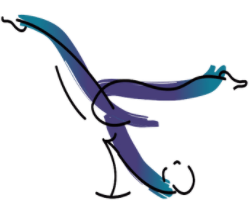Enhancing Back Pain Relief and Posture Improvement
As many as 80% of Americans experience back problems, with 8% experiencing such chronic back pain that it limits their mobility and reduces their quality of life. Fortunately, you don't have to just put up with back pain. The core principles of Pilates, including mindful movement and controlled breathing, are a powerful approach to improving posture and alleviating back pain. Pilates targets the muscles responsible for maintaining an upright stance while supporting and strengthening your core. Moreover, the use of breathing in Pilates creates a profound link between your mind and body while releasing tension and relaxing muscles. A regular Pilates routine can address the root causes of your discomfort and support your spine. Even if you're fortunate not to experience back pain, Pilates can help prevent future back injuries and improve your mobility, flexibility, and overall well-being.
A quarter of workers experience back pain
Hours of sedentary activity at work, especially in an office-based environment, is a common cause of work-related chronic pain. Prolonged periods of sitting at desks with bad posture can often weaken core muscles and contribute to poor posture, resulting in discomfort. Not moving around enough during the day and repetitive tasks, such as typing and using the mouse, further exacerbate muscular imbalances, while inadequate ergonomic setups only compound the issue. As a result, one in four workers experience back pain, while 10% are forced to stop working completely or switch jobs due to back pain. Those aged 45 to 64 are more likely to experience chronic back pain than their younger counterparts, and it is the leading health problem resulting in early retirement.
Reducing your risk of back pain
To minimize the likelihood of back pain, adopt habits that prioritize your back's health. Try to take regular breaks from your desk, incorporating regular stretching exercises to enhance flexibility and reduce muscle tightness. When lifting objects, engage your leg muscles, not your back, to distribute the load evenly. Regular exercise, including practices like Pilates, will strengthen core muscles and support spinal stability. Maintaining a healthy weight reduces strain on your back while practicing good posture, both standing and sitting, prevents unnecessary stress. Quitting smoking is also essential, as it improves blood flow to spinal tissues while effectively addressing causes of stress, anxiety, and depression and can prevent muscle tension.
Harnessing the power of breathing
The breath-centric approach used in Pilates exercises holds the key to unlocking relief for those grappling with chronic back discomfort and poor posture. During these exercises, deliberate and deep inhalations are combined with controlled exhalations, creating a rhythm that helps with muscle relaxation and releasing tension. As you exhale, the engagement of deep abdominal muscles, including the transverse abdominis, acts as a natural support system for the spine. This helps reduce the strain on surrounding muscles and promotes pain relief. This controlled and deliberate pattern of breathing creates an effective connection between the mind and body, allowing you to execute movements with awareness and precision.
Pilates exercises for enhanced posture and back pain relief
Pilates includes a range of exercises that target different areas of the body and muscle groups. The Pelvic Curl exercise helps enhance your stability and flexibility to improve posture. Lay on your back and gradually lift each section of your spine off the floor while engaging your glutes and core. Alternatively, the Saw Pilates exercise requires you to rotate your torso while keeping your spine lifted, activating your obliques to encourage flexibility and support for the spine. The Cat-Cow Stretch includes alternating between arching and rounding your spine to promote and engage your core muscles for improved spinal support. These exercises, combined with mindful breath and purposeful movement, effectively target important muscles for maintaining posture and alleviating back pain.
By promoting the power of breath, Pilates offers a holistic approach to alleviating back pain relief and improving posture. By targeting core muscles, mindful movement, and controlled breathing, Pilates becomes a powerful tool in fortifying the body against pain and discomfort. If you experience chronic back issues, it's crucial to consult a medical professional before starting Pilates exercises to ensure the exercises are safe and appropriate for your specific condition.
Word Credits: Nina Sumner


